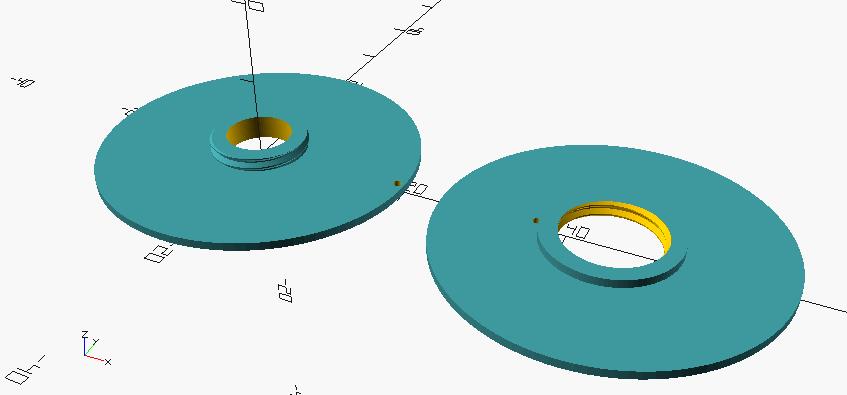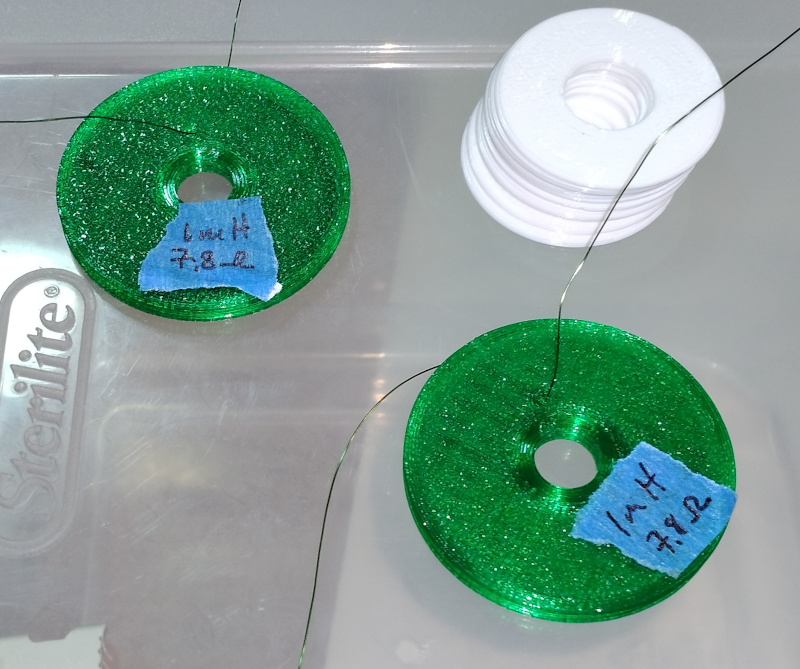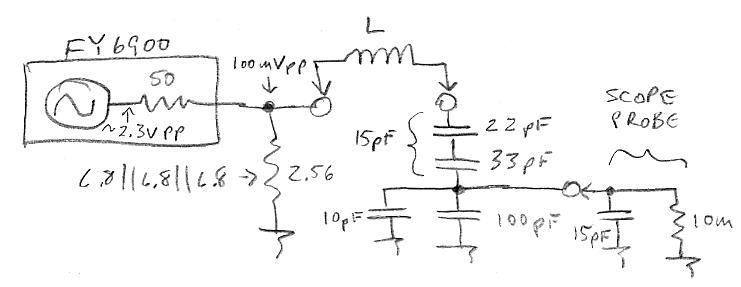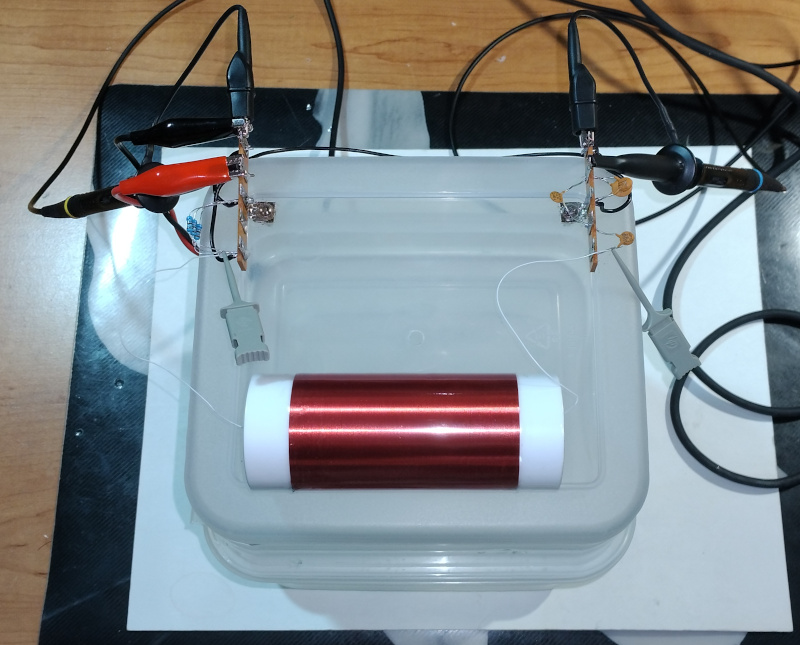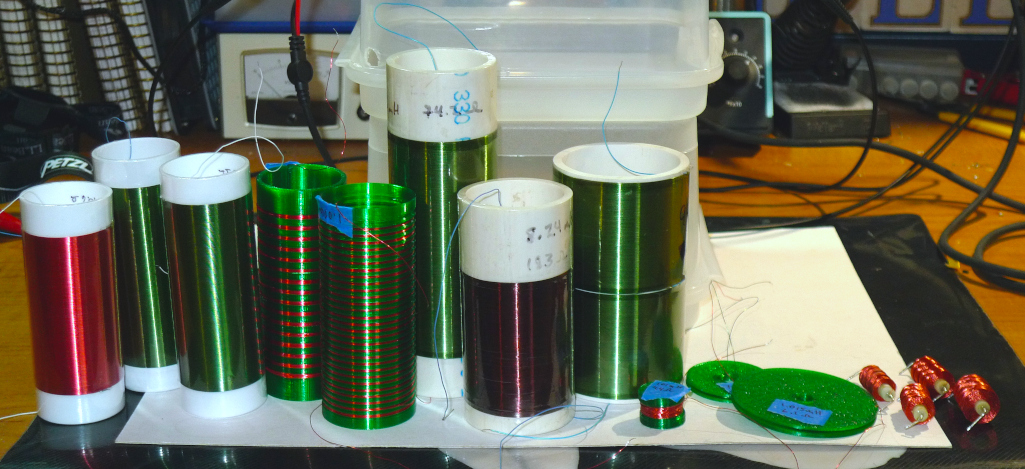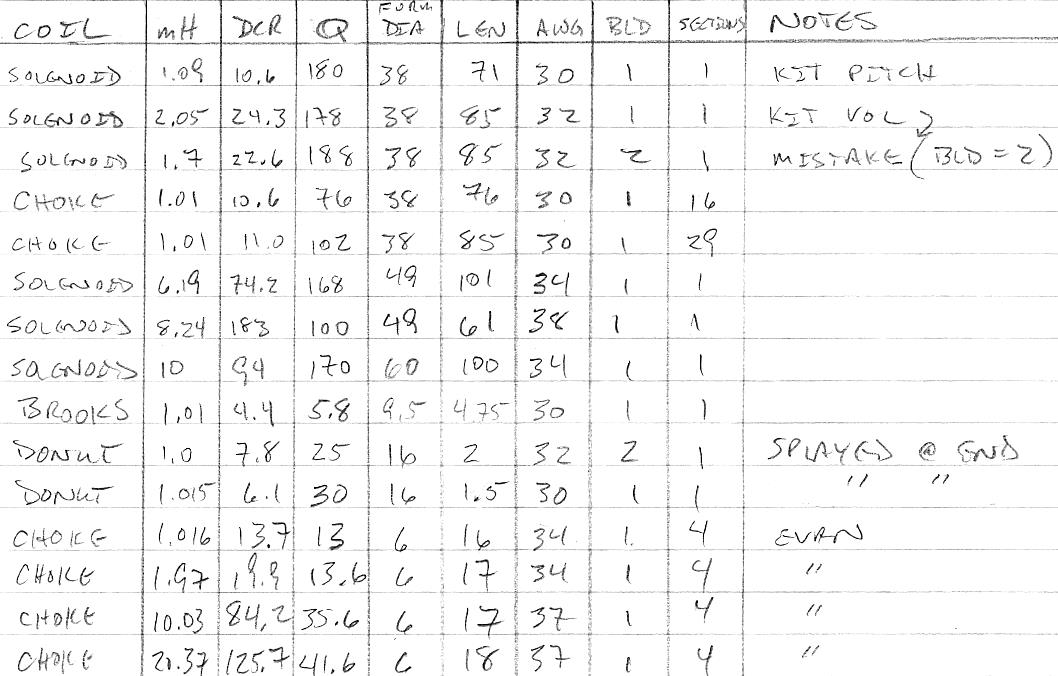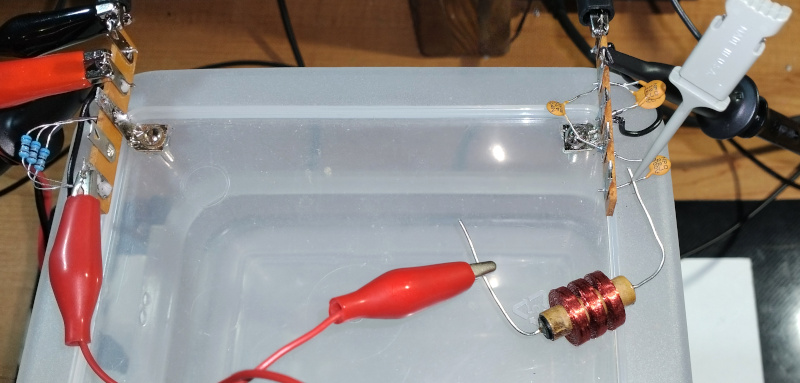A Tale Of Three Coils
Giving my coil design program something to do:
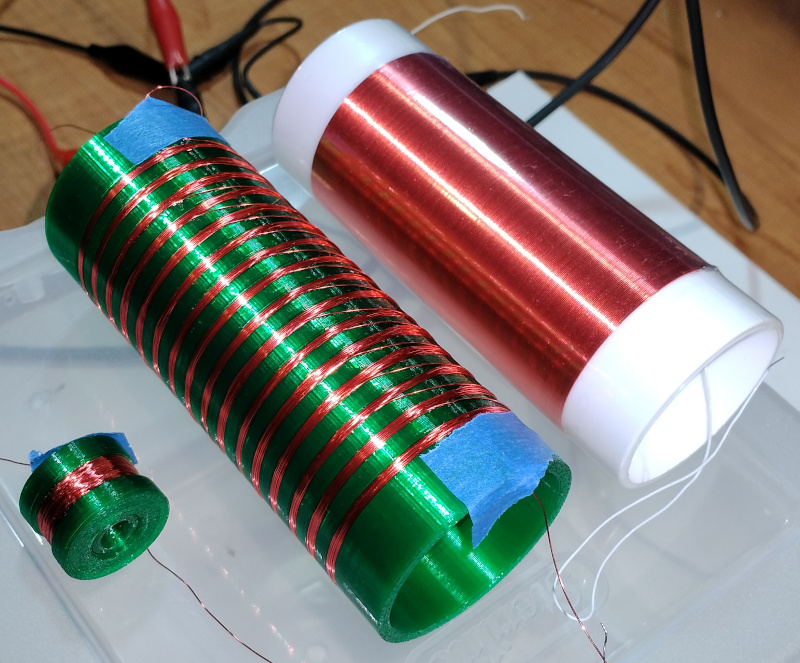
Coil on the right is the usual 1 mH / 10.6 DCR single layer solenoid on 38 mm dia PVC plumbing in the D-Lev kit.
Coil on the left is a 1 mH / 4.4 DCR Brooks on a PETG printed bobbin.
Coil in the middle is a 1 mH / 10.4 DCR 16 donut choke with 15.6 turns per donut, on a PETG form with similar dimensions to the solenoid.
All wound with Remington AWG 30 single coat wire.
Observations:
1. Free air resonance for the solenoid is 3.14 MHz, for the choke 2.46 MHz. As expected, the Brooks coil is a total dud for Theremin field coil use - I couldn't even find its free air resonance.
2. The choke clearly has somewhat lower Q than the solenoid, with the kit pitch plate of ~12 pF I measure Q=50 for the choke and Q=75 for the solenoid. This is a really rough measurement that doesn't take into account 50 Ohm drive droop at resonance, the real Qs are almost certainly higher. But the lower free air resonance is consistent with lower Q.
3. I have some AWG 32 double coat that might improve the choke Q by reducing the proximity effect for a similar volume side choke.
4. More donuts with fewer turns would also likely improve the choke Q.
5. The Brooks is trivial to wind, and the choke is vastly easier to wind than the solenoid. For the Brooks and choke you just blindly scramble it in.
6. The coil design program really nailed all three coils in terms of mH and DCR - so yay! for that.
7. Next I'll try more donuts with fewer turns each of the double coat wire and a 2 mH target.
8. The groove going from one donut to the next needs to be spiral, and the OD of the coil form should probably be a bit higher than the windings to catch the wire in the groove.
9. I should also do drift testing with the choke. It has nail polish "dope" on it to keep the windings secure.



